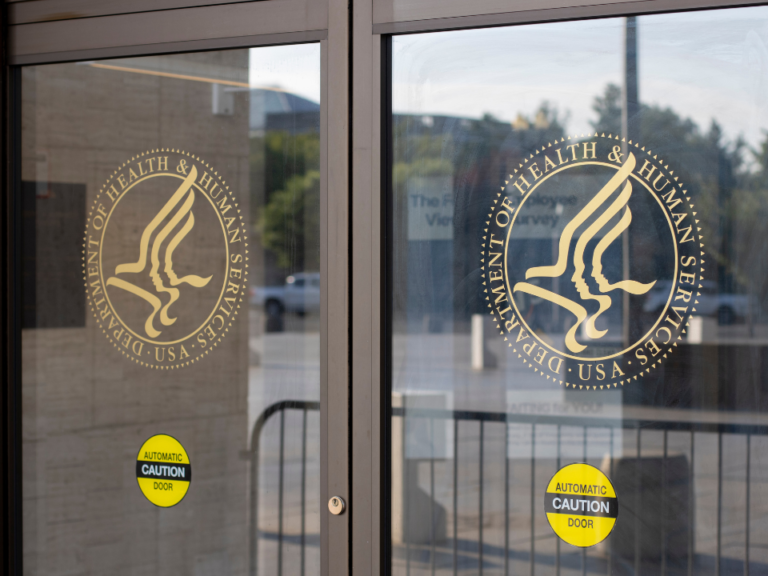On Oct. 17, 2013, a surgical instrument called a power morcellator tore into the uterus of Amy Reed, an anesthesiologist at Beth Israel Deaconess Medical Center, pulverizing what were believed to be benign fibroids.
Reed’s “minimally invasive” hysterectomy, a routine procedure, was performed at the Brigham and Women’s Hospital, a teaching hospital of Harvard Medical School.
Alas, Reed’s uterus contained an occult sarcoma, which the morcellator proceeded to spread through her abdominal pelvic cavity. A morcellator consists of a hollow cylinder with powered blades that is inserted into the abdomen to break tissue into fragments, which are then removed through small incision sites.
Over ensuing months, as Reed battled to stay alive, her husband, Hooman Noorchashm, a cardiothoracic surgeon and, at the time, a lecturer at Harvard, waged a national campaign to put an end to the practice of power morcellation.
The couple hasn’t pursued legal remedies.
At least in the beginning, there was no obvious target for legal action. Medical malpractice claims usually involve deviation from standard practice. Power morcellation, by contrast, is the standard of care, and it works just fine, except for the unlucky few, Reed among them.
Laparoscopic power morcellation is performed on about 100,000 women a year in the U.S. The procedure is popular because patients end up with smaller scars, and since they recover faster, hospital stays are shorter or avoided altogether.
After receiving the devastating news, Reed and Noorchashm, both 41, rallied their friends and peers, and Noorchashm single-handedly launched a social media campaign, contacting the press, and dumping hundreds of pages of documents on a Change.org petition. On some days, folks on his list receive three or more emails in which he urges immediate action.
Noorchashm is taking on the entire establishment—starting with his own institution, moving on to the gynecology specialty organizations, and then the FDA.
He wants to change the way medical devices are regulated. If new legislation is required to pull power morcellators off the market, so be it, Noorchashm reasons.
And—amazingly—in Hooman vs. the World, Hooman is ending up on top.
In recent months, Brigham & Women’s Hospital and other medical institutions have either suspended power morcellation or mandated the use of a containment system.
On April 17, FDA issued an advisory discouraging the use of power morcellation, stating that one in 350 women who undergo hysterectomy or myomectomy for fibroids have an unsuspected uterine sarcoma.
On July 10 and 11, an FDA panel—the Obstetrics and Gynecology Devices Panel of the Medical Devices Advisory Committee—will meet to discuss power morcellation.
Ethicon Inc., a Johnson & Johnson unit that manufactures power morcellators, announced recently that it would suspend sales of three of its devices pending the FDA hearing. The devices in question are Gynecare Morcellex, Morcellex Sigma Tissue Morcellator System, and Gynecare X-Tract Tissue Morcellator.
And lawyers are casting nets for plaintiffs in class action suits. “The firm is now offering free morcellator lawsuit reviews to women who may have experienced the spread of undiagnosed uterine sarcoma and other cancers due to uterine morcellation,” said one firm in a press release earlier this week.
Brigham & Women’s has since stopped power morcellation.
“In the early use of power morcellators, I don’t think we—we being the medical profession—properly understood the risk, “ said Monica Bertagnolli, chief of the Division of Surgical Oncology at BWH and professor of surgery at Harvard. Bertagnolli was designated by the hospital to discuss clinical issues involving morcellation with The Cancer Letter.
“Based upon data from our hospital, we believe that open power morcellation in the setting of a malignancy significantly increases the risk of tumor recurrence and overall death from the disease. These data were recently published in the journal Cancer (George, et al, EPub June 12, 2014).”
The hospital is conducting an IRB-approved registry study focused on morcellation with a closed containment system. A conversation with Bertagnolli appears here.
Tilting at FDA
“All this would not have occurred without Hooman,” said David Challoner, emeritus vice president for health affairs at the University of Florida.
“That’s part of the problem here, with the morcellator,” Challoner said to The Cancer Letter. “Not only was the technology put to a new use without any real evaluation, but the signal from the clinical environment back to the regulatory environment that ‘there’s a problem,’ is a very low level signal in this particular case—until a wise doctor had it used on his unfortunate wife, and figured out what the hell was going on and blew the whistle.”
A conversation with Challoner is posted here.
Noorchashm’s actions have served the public interest well, Bertagnolli said.
“Hooman is a really fine individual and a fine surgeon,” she said. “Raising awareness of the risk of the morcellation procedure is an important and valuable contribution. His work, unfortunately resulting from personal tragedy, has galvanized all of us to be very aggressive in developing better policies so that we can avoid this horrible result in the future.”
Noorchashm and Reed said they took their case to the public, the press, and Congress, because BWH officials and gynecology organizations had ignored them.
“I pretty much knew immediately, as a general and cardiothoracic surgeon, that we were looking at a systemic error and that this was a very serious women’s health hazard that was being caused by gynecologists,” Noorchashm said to The Cancer Letter. “We initially went to BWH, and I subsequently went to the American Congress of Obstetricians and Gynecologists—I got absolutely no cooperation from them.
“So we decided we’re going to launch this campaign and let people know, and let government regulators decide.”
Noorchashm, Reed, and an increasing number of critics say the prevalence of morcellation is the result of a dysfunctional medical device approval mechanism at FDA. The agency’s 510(k) process needs to be revamped, they say.
“I have learned a lot about 510(k) and the device industry since 2009,” said Challoner, who chaired an Institute of Medicine committee tasked by FDA and Congress to review the legislation in 2009. “At the end of two years, the [IOM] committee unanimously recommended that the 510(k) process was—we didn’t use the word irrational, but we certainly could have—defective and should be replaced.
“There is no mechanism by which the health of the public could be protected when moderate risk devices were only cleared to the market place, not approved, under 510(k). They are cleared to the market based on, in some cases, a multi-year multi-device, daisy chain of predicate devices.”
The absolute number of women at risk of being harmed by morcellation in the U.S. is uncertain, but experts estimate the range at one in 350 to one in 1,000.
“One in 350 is a death knell; it’s pretty devastating,” said Paul Sugarbaker, director of the Center for Gastrointestinal Malignancies and chief of the Program in Peritoneal Surface Oncology at MedStar Washington Hospital Center. “If that data is indeed true, Hooman has put us onto a much larger problem, and that is the dangers of these large fibroids.”
Sugarbaker treated Reed’s leiomyosarcoma in an emergency procedure. She is one of at least seven patients he has seen in the past two years for cancer spread through morcellation.
“There seem to be more patients coming in, since it has been written up in the papers,” Sugarbaker said to The Cancer Letter. “Disseminating cancer while you’re removing it can’t be a good thing, because these sarcomas grow, and they grow like crazy.”
“But the larger picture is, there needs to be more attention focused on large and symptomatic fibroids. It’s much more dangerous than gynecologists have been aware of. And I think that comes about as a result of this investigation.”
Since the recent FDA advisory, many hospitals have put a stop to using power morcellation.
“It’s happening all over the country,” Sugarbaker said. “Hospitals and doctors don’t want to be associated with something that’s dangerous for patients, and medically and legally disastrous.”
Some institutions have mandated the use of “containment bags” with the procedure. Such bags are commonly used in oncologic surgery, though FDA hasn’t approved them for use with power morcellation.
“From the administrative standpoint, I think the best move is, don’t do it,” said Larry Kaiser, chief executive officer, dean and a thoracic surgeon at Temple University Medical Center. “I don’t think there is a tremendous downside there. It really shouldn’t be done.
“If you are going to do it, and you want to do it in a containment bag, there is a chance the bags can break,” Kaiser said to The Cancer Letter. “Overall, yes, there is a very small chance of spreading malignant cells, but you can’t make that diagnosis until the tissue is removed.”
Unfortunately, it’s not easy to determine when power morcellation should be avoided.
“If we know a priori that a woman has a malignancy, then every effort is made to avoid fragmenting it in ways that can spill tumor cells into the abdomen,” Bertagnolli said to The Cancer Letter. “Surgery for benign leiomyomas is very common, and beneficial to many women. Many women benefit from morcellation of their tumor, because this allows much smaller incisions, quicker recovery, and also allows tumors to be removed in ways that can preserve fertility.
“The big issue, therefore, lies in detecting which women have malignant disease prior to operation. Unfortunately, we don’t have a reliable method to determine whether or not a uterine tumor is malignant before it has been removed and fully examined.
“That’s our main concern: we never want to see this happen to another woman. By the same token, we also don’t want to see this over-applied so that young women lose their fertility unnecessarily, because of some global policy that can’t assess risk-benefit.
“Even with a containment device, we can’t be certain that the procedure is safe if the tumor turns out to be a sarcoma,” Bertagnolli said. “We aren’t even happy with the modified technique yet. The only way you assess risk-benefit is by getting the data, which is what we are doing.”
Gynecology organizations agree, calling for more data and research, and cautioning against sweeping, definitive policies to end the use of power morcellation.
“I am someone that specializes in rare tumors, and I can share with you that it is very frustrating to not have great data about rare tumors, so we are stuck with not having extensive databases or research to draw conclusions from,” said Jubilee Brown, director of gynecologic oncology at The Woman’s Hospital of Texas, and associate professor in the Department of Gynecology Oncology and Reproductive Medicine at MD Anderson Cancer Center. “The thing that has been lost in much of the discussion is the benefit that minimally invasive surgery brings to the vast majority of women.
“We are not just talking about small incisions; we are talking about substantial improvements in morbidity and mortality, compared with open surgery,” said Brown, a member on the board of trustees of the American Association of Gynecologic Laparoscopists. “That’s why this becomes a really important issue for women who are looking at this procedure.”
Noorchashm disagrees.
“It is not a tenable ethical position to sacrifice the lives of a minority subset of women with missed or occult uterine cancers for the ‘benefit of the majority,’” he counters. “That’s unethical. If morcellators stay on the market, the standard of care won’t change.
“What an FDA ban would do is, when someone’s cancer gets spread through morcellation, the surgeon who spread the cancer, can be taken to court. So it’s going to put pressure on gynecological surgeons to be careful not to cut things up inside someone’s body.”
The 510(k) Process and Adverse Outcomes
Power morcellators entered the market via the 510(k) process, which clears devices for use based on predicate devices that had already been in the market prior to the establishment of the 510(k).
“It’s designed as a transition,” said Challoner, chair of the IOM committee that issued a report on 510(k) three years ago. “The reason this whole thing was put in place the way it was in 1975 was that when devices were, for the first time, coming to the public attention, and there were some moderate-risk devices, like for instance, the Dalkon Shield IUD, which were creating tremendous pelvic damage.
“Congress asked the FDA and HHS to put together a study to devise some way to regulate moderate risk devices. Nobody is worried about a tongue depressor, which is a low risk device. Everybody is worried about an implantable pacemaker, which gets treated like drugs and requires pre-market evaluation analogous to drugs.
“The device industry is very different from big pharma in terms of how they design and how they modify serially, and how they need, from their point of view, to get to market as quickly as possible after a device is designed and manufactured. There is a very strong pressure from the device industry to get into the market quickly.
“The device companies have been able to make [the 510(k)] survive politically over the ensuing 40 years.”
Challoner’s IOM panel—the Committee on the Public Health Effectiveness of the FDA 510(k) Clearance Process—was formed because of a series of failures of several devices prior to 2009.
“We recommended that FDA go back to the drawing board and get all the players around a table and devise a safer way to get into the market than just a clearance process,” Challoner said. “The pre-market evaluation would have a rationale for use and careful review of engineering and manufacture. And, more rapid means for adverse affects to be reported from the marketplace back to the FDA so we get an early warning signal when a device was doing something unexpected.
“And now the morcellator thing is just one more example of the clearance of a device for a use, not approval, based on predicates already in the market, that is, prior morcellators for other uses.”
Noorchashm says an adverse events reporting process should be included in the 510(k) legislation. “They dropped the ball, they sided with industry over patient safety,” he said. “That is not right.
“Fundamentally, 510(k) has no mandate or requirement for the practitioner or hospital to report adverse outcomes back to the FDA or the manufacturers. In 2011, the Institute of Medicine did an analysis and testified before the Senate [Health, Education, Labor and Pensions] Committee, concluding that 510(k) provides no legal basis to ensure patient safety, because it is lacking in post-market surveillance and because it does not require demonstrating safety at the time of approval.”
A beefed up adverse events reporting process would be helpful, gynecologists and surgeons agree.
“I am a clinical trials researcher, and so I am strongly in favor of collecting accurate data for any device that could potentially alter a patient’s outcome,” said BWH’s Bertagnolli, chair of Alliance for Clinical Trials in Oncology. “Devices with this potential should have to, at a minimum, be studied for a certain period of time under a design that allows examination of adverse outcomes.
“If you don’t have reporting, you can’t gather the data in a timely matter, potentially saving lives,” Bertagnolli said. “Would these cases have come to light more quickly if we had a reporting system from when the power morcellator was first placed in use? It seems likely.
“It is hard to believe we haven’t done this yet.”
More information is better, MD Anderson’s Brown agrees.
“Any way that we can obtain more data surrounding this issue is a benefit,” she said. “Whether that is reporting of adverse events, or forming a database, or more research funding, or more technology—I think all of those are ways that patients potentially stand to benefit.”
However, Noorchashm sees no reason to set up a prospective data collection mechanism for morcellation.
“What’s the use of that?” he said. “It’ll be a prospective registry of death from iatrogenic cancer upstaging. We already know what happens to women whose cancers are spread by morcellation. This suggestion is not an ethical one, and is designed to buy time for the industry to do damage control. We stop entire clinical trials for one death.
“I’m not sure what the gynecological leadership is really thinking.”













